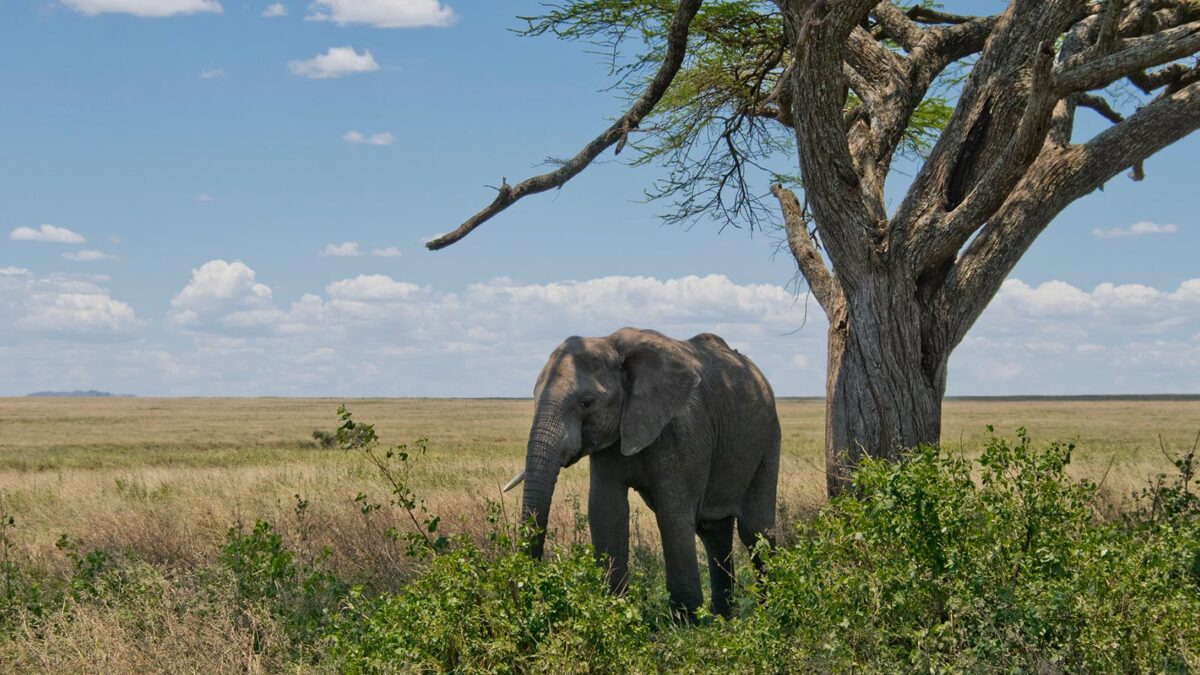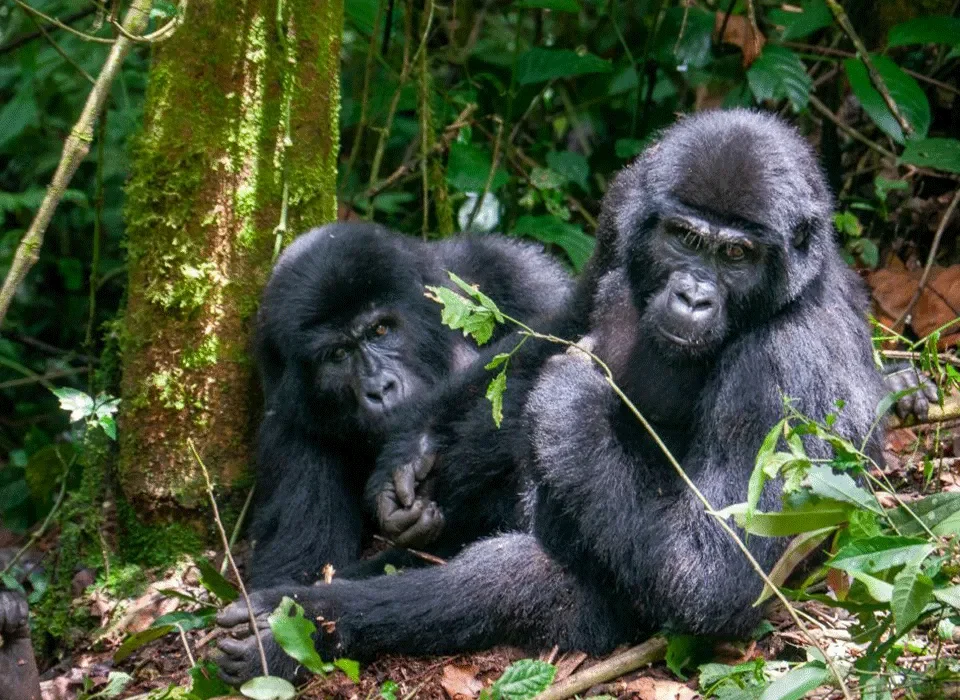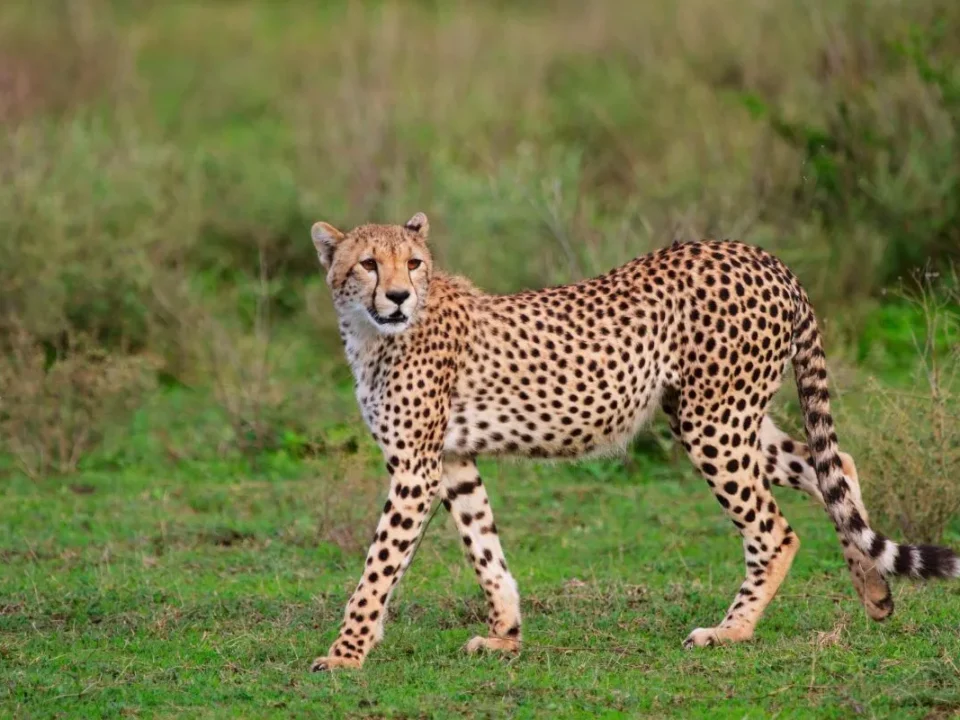Serengeti National Park in Tanzania

Birds of Serengeti National Park, Tanzania
December 10, 2023
Safari in March Wildebeest Migration Pattern
December 10, 2023Serengeti National Park in Tanzania – Embarking on Thrilling Game Viewing Safaris
Established in 1952, Serengeti National Park in Tanzania stands as a testament to the awe-inspiring beauty of nature. It proudly hosts the grand spectacle known as the great migration of wildebeest and zebra, a phenomenon unrivaled in the animal kingdom. In addition to this migration, the park boasts a resident population of majestic lions, swift cheetahs, towering elephants, graceful giraffes, and a myriad of bird species. The accommodation options vary from luxurious lodges to convenient mobile camps, ensuring a comfortable stay amidst the wilderness.
Exploring the Vast Serengeti Landscape
Encompassing an expansive 5,700 square miles (14,763 square km), Serengeti National Park is larger than Connecticut, making it a vast haven for wildlife. Divided into three distinct sections, the southern/central part, known as Seronera Valley, captivates with its classic savannah scenery – endless plains adorned with acacias and teeming with wildlife. The western corridor, marked by the Grumeti River, introduces more forests and dense bush, offering a different facet of the Serengeti experience. The least-visited northern Lobo area, bordering Kenya’s Masai Mara Reserve, completes the triad of diverse landscapes.
A Natural Wonder Recognized Globally
Within the 30,000 km² region, two World Heritage Sites and two Biosphere Reserves stand testament to the ecological significance of Serengeti National Park. A unique ecosystem that has inspired the works of writers like Ernest Hemingway and filmmakers such as Hugo von Lawick, it continues to captivate photographers, scientists, and nature enthusiasts alike. The Serengeti ecosystem, one of the oldest on Earth, remains virtually unchanged in its essential features of climate, vegetation, and fauna over the past million years.
The Great Migration: A Timeless Phenomenon
Serengeti’s most famous spectacle is the great migration, a timeless journey featuring over a million wildebeest and about 200,000 zebras. Every October and November, they flow south from the northern hills to the southern plains for the short rains, and then, after the long rains in April, May, and June, they swirl west and north. Their ancient instinct to move remains unyielding, defying obstacles such as droughts, gorges, and crocodile-infested rivers.
Birds of Serengeti National Park Tanzania – A Feathered Paradise
Renowned as one of Tanzania’s premier birding destinations, Serengeti National Park boasts over 500 bird species. The Lake Ndutu area, in particular, stands out as a paradise for bird-watchers, offering year-round sightings during thrilling game drives.
Wildlife Extravaganza in Serengeti National Park in Tanzania
A truly exceptional wilderness area, Serengeti hosts an astonishing variety of animals, from the iconic Big Five to the antelopes and ground rodents that roam the plains throughout the year. With over 90 wildlife species, the park ensures an exhilarating experience for visitors during game drives.
How to get to Serengeti National Park
Most safaris to Serengeti commence from the town of Arusha, with Kilimanjaro International Airport (KIA) serving as the primary gateway. Alternatively, you can opt for Julius Nyerere International Airport (DAR) near Dar es Salaam, using a domestic flight to reach Arusha Airport (ARK). For those seeking a more economical route, flights from Nairobi, Kenya, followed by a shuttle-bus to Arusha, present a viable option. Your tour operator within Tanzania typically arranges ground transportation upon arrival, ensuring a seamless journey.
Where to Roost Amidst the Wilderness: Accommodations in Serengeti
Several splendid accommodations await visitors in Serengeti National Park, providing a perfect blend of luxury and proximity to nature. Notable options include Singita Mara River Tented Camp, and Beyond Grumeti Serengeti Tented Camp, and Beyond Serengeti Under Canvas, Ehlane Plains Camp, Four Seasons Safari Lodge, Kaskaz Mara Camp, Kirawira Serena Camp, Kusini Kopjes Kambi, Mbuzi Mawe Tented Camp, and Naona Moru Camp.




